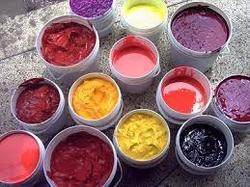
Pigments have been part and parcel of human civilization. Both natural and our man made world are full of various kind or natural and synthetic pigments. We can get pigments from nature in many ways such as pigment powder from mineral rocks or pigment extracts from flowers, leaves, fruit peels and so on. Human beings have successfully produced a synthetic range of all the pigments available in nature and many other pigments by combination of two or more colors.
Food color is a separate section of pigment industry where we are dawned with task of producing edible pigments which not only adds color and appeal to our food but do not cause any harm to our body. In the same way whether it is textile industry, make up industry, furniture industry, plastic industry or any other kind of manufacturing unit, presence of pigment is a must. Since organic pigments are so important to us it has become very important to understand the science behind pigment dispersion which plays a crucial role in efficiency of a particular pigment.
What is pigment dispersion?
It will be interesting to know that when pigment is in the form of pigment powder there is a strong force of attraction between two particles of the . This strong force of attraction keep the particles clung to each other and prevent dispersion of pigment when converted in liquid state. This can have negative impact on the performance of the paint. In order to overcome this problem pigment dispersing agent is added in the paint along with resin, solvent and the pigment. This pigment dispersing agent not only breaks the strong force of attraction between the particles but it also plays a critical role in achieving right consistency and stability in the paint.
Process of pigment dispersion!
Entire process of pigment dispersion can be divided into three steps which have been discussed below:
- Pigment wetting: It is the first and foremost step for dispersion of pigments. In this stage dry pigment is dipped in resin solution to make it wet. It is mainly done to convert solid/air interface of pigments into solid/liquid interface.
- Grinding of Pigments: This is very important stage for achieving stability in the paint. In this stage pigment agglomerates are broken into smaller granule by application of external force. It is very important to monitor the granule size at this stage in order to achieve better dispersion and hence better efficiency in later stages. Granules should not be too fine or coarse. They should be of perfect size.
- Stabilization: It is the final stage in which the dispersing agent is added to the paint in order to achieve stabilization in the granules created in the second stage. This stage is very important to prevent granules from getting attracted towards each other and forms uncontrolled osculates. Stabilization can be done in many ways such as electrostatic stabilization and steric stabilization. Right dosage of dispersing agent is very important to achieve minimum viscosity and maximum stability.